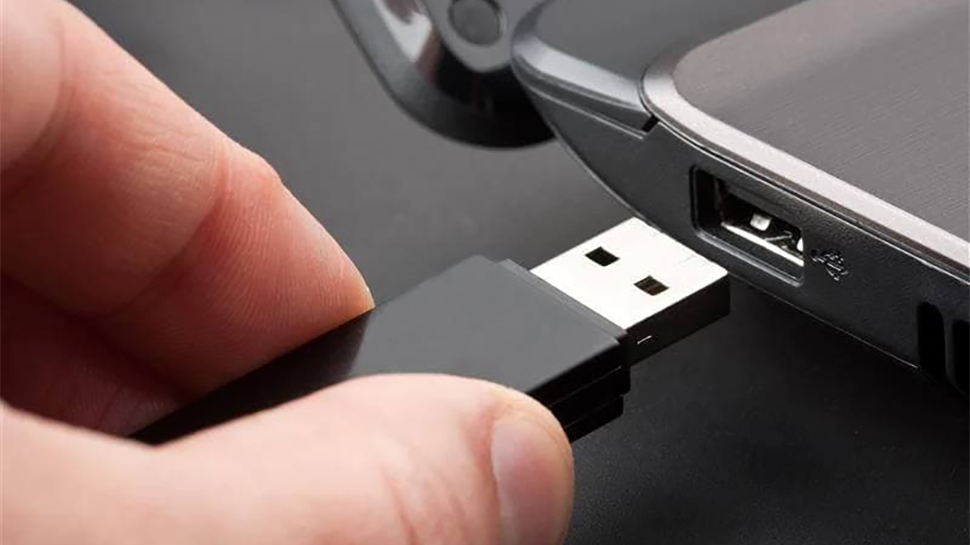More and more USB sticks and microSD cards are being made with dubious components — data recovery firm uncovers no-name, low-quality NAND inside many devices
Nameless NAND chips everywhere.

Data recovery firm CBL reports that memory chips in the most recent microSD cards and USB sticks are perhaps the most unreliable. The company says that in its business, it's finding more and more devices with cut-down memory chips with manufacturer names removed and even USB sticks that utilize a repurposed microSD card soldered onto the board. CBL concludes that portable flash devices are suffering from increasingly poor quality.
“When we opened defective USB sticks last year, we found an alarming number of inferior memory chips with reduced capacity and the manufacturer's logo removed from the chip. Clearly discarded and unrecognizable microSD cards are also soldered onto a USB stick and managed with the external one on the USB stick board instead of the microSD's internal controller," explains Conrad Heinicke, Managing Director of CBL Datenrettung GmbH.
CBL believes these low-quality NAND flash chips were probably manufactured at trustworthy companies like SanDisk and Samsung but failed quality control. Instead of being thrown away, they were saved and made it to the broader market. These chips are not completely broken, but CBL notes they come with reduced storage capacity, implying that reducing capacity was how they were salvaged.
CBL even provided photos of three USB sticks in its data recovery business. The manufacturer's name was covered with text on one of the flash chips, but it can be identified as SanDisk. However, the two other drives shown had no names or labels. One even used a black microSD card soldered to a PCB, an increasingly common tactic to produce USB sticks cost-effectively (and perhaps dubiously).
Most low-quality USB sticks were "promotional gifts," according to CBL, but some were "branded products." Though this should concern us, CBL doesn't elaborate on what it considers a "branded" product. USB sticks can come in many forms: free ones that you might get (such as a promotional gift, as CBL says), regular sticks that come from brands you probably haven't heard of, and models that are from mainstream brands like SanDisk. If CBL claims this kind of flash is found inside even drives from brands with name recognition, that would be a big problem.
CBL also identifies QLC technology as another factor that compounds the reliability problems exhibited by these repurposed chips. Every flash chip comprises cells, and each cell can store several bits. The first NAND chips could only store one bit per cell and were called single-level cell (SLC), which meant excellent performance and reliability but inferior data density.
Eventually, manufacturers began increasing the bits per cell to increase the amount of storage that could be put on a single chip, but more bits meant less reliability. Today, quad-level (QLC) flash chips offer the highest bits per cell and are commonly used for cheap drives. CBL says that combining subpar flash chips with QLC memory exacerbates already existing quality problems, and the company says, "You shouldn't rely too much on the reliability of flash memory."
Get Tom's Hardware's best news and in-depth reviews, straight to your inbox.
This report doesn't even touch on the plague of USB sticks that falsely claim to have several hundred gigabytes of capacity but only have perhaps as little as 16GB or even 8GB. These devices are also constructed using techniques similar to the USB sticks that CBL warns of, like sticking microSD cards to a board.
Matthew Connatser is a freelancing writer for Tom's Hardware US. He writes articles about CPUs, GPUs, SSDs, and computers in general.
-
Sleepy_Hollowed For sure, home long term storage should be mechanical drives.Reply
At the bare minimum most if not all the data can be recovered if not encrypted.
Flash storage is pretty bad and speaks volumes from say ROM on old video game consoles that still work to this day. -
USAFRet Reply
Mechanical drives made with counterfeit components would be just as bad.Sleepy_Hollowed said:For sure, home long term storage should be mechanical drives.
At the bare minimum most if not all the data can be recovered if not encrypted.
Flash storage is pretty bad and speaks volumes from say ROM on old video game consoles that still work to this day.
Which is the problem here.
I'm quite sure someone could make and market a 3.5" drive, with castoff microSD cards inside, with the firmware modified to report whatever size and speed is desired.
And it would have exactly the same problems.
This not a case of solid state vs mechanical. This is a case of counterfeit components. -
Sippincider Didn't see places mentioned, but am assuming these are being sold by pop-up vendors on the usual major sites where this kind of junk is found?Reply -
Colif its all the fakes out there that are the cause. I don't expect brands like Samsung and Sandisk have this problem.Reply
But when every online retailer is selling fake drives, what can you do? Well, you could check the makers website and see if the drive you are buying actually exists.
There doesn't seem to be any consumer protection. No one apart from Websites seems to be making this a big deal... oh, and Youtube channels
link below covers most of it:
https://forums.tomshardware.com/threads/buyer-beware-16tb-or-larger-external-portable-ssd-usb-drives-are-fake.3773032/ -
vanadiel007 "the two other drives shown had no names or labels"Reply
And that says it all. Don't buy no name brands, and only buy from reputable sources. I never buy from third parties, resellers, scalpers or any of that if I purchase something on Newegg or Bestbuy.
And on Amazon I only buy what is sold by Amazon.
It is unfortunate Bestbuy, Newegg and Amazon are allowing anybody to setup shop and sell items without wanting to take responsibility for the pricing or quality of the goods sold. -
USAFRet Reply
Tell that to the people that buy from Temu, AliExpress, and Wish.vanadiel007 said:And that says it all. Don't buy no name brands, and only buy from reputable sources.
Many of whom hang around in here. -
NeonHD I guess that explains why my 256GB Netac microSD card only lasted for 1½ years before randomly dying on me. Lost my graduation photos among other things.Reply -
USAFRet Reply
Your data should never exist on a single device.NeonHD said:I guess that explains why my 256GB Netac microSD card only lasted for 1½ years before randomly dying on me. Lost my graduation photos among other things.
Especially a flash drive.
Doubly especially on a microSD.
Triple that for a 3rd rate brand microSD.
